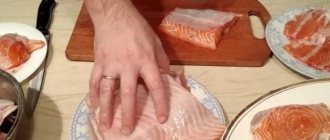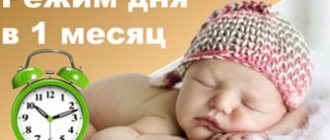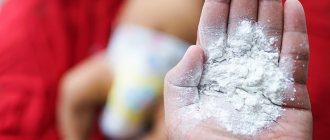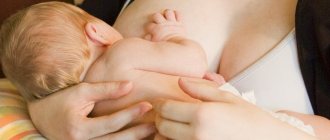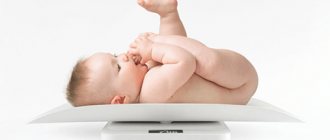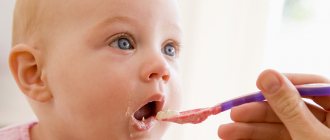Ways of transmission of pinworms in children
Enterobiasis is transmitted through household contact when a sick child spreads pinworm eggs in their environment on their hands and under their nails. They get there when children scratch the skin around the anus, irritated by a female helminth crawling out of the rectum. Adult pinworms crawl out of the intestines late in the evening or at night to lay fertilized eggs in the skin folds around the anus. After scratching, a huge number of eggs remain on the skin of the hands and under the nails.
Other family members can become infected this way if they do not observe basic hygiene skills. A child suffering from enterobiasis is at risk of reinfestation by ingesting eggs laid by helminths living in his intestines. This risk increases if infected children rarely wash their hands or have their underwear and bedding changed immediately after going to bed. By touching toys, household items, dishes and products, or pet hair, a child spreads pinworm eggs in his environment.
All family members, as well as members of the children's team where the child with enterobiasis is located, most often become infected in the shortest possible time. Through unwashed hands while eating, biting nails, sucking fingers or toys, pinworm eggs enter the mouth and then the intestines. After 4 weeks in the intestines, the parasites become sexually mature pinworms and begin to lay eggs. If you scrupulously follow the recommendations for maintaining personal hygiene during the treatment of pinworms, self-infection of children can be stopped. An important condition is that all family members should be treated.
It is difficult to teach a preschool child to follow hygiene rules. For this reason, up to 5-6 years of age, it is extremely difficult for children attending children's groups to cure pinworms completely and without relapses. Even if a child washes his hands often and does not have bad habits (nail biting, thumb sucking), he can become infected from his peers. To interest children and teach them to wash their hands, various techniques are used: using soap with various inclusions or in the form of funny figures, colored soap foam, blowing soap bubbles, etc. Interesting games in the bathroom will help teach kids about hygiene.
Pinworms are the causative agent of enterobiasis
What is enterobiasis and how to detect pinworm eggs in children? Enterobiasis is a disease caused by helminths entering the human body . Pinworms are a type of helminth (parasite) that can live and reproduce only in the human body. They can be brought in from a contaminated table surface, unwashed fruit, or after contact with a sick person.
Parasites, entering the intestine, move from the small to the large intestine, lay eggs there, after which they die and are excreted along with the feces.
The eggs cause severe itching around the anus, forcing you to scratch the affected surface and again bring them under your nails.
Thus, this process will continue endlessly if you do not know how to remove pinworms from a child’s body.
This disease affects children more than adults.
Outbreaks of enterobiasis occur in the summer-autumn period, when children and schoolchildren spend 24 hours a day outside, and ripe berries and fruits just ask to be eaten straight from a tree or bush. Puddles, sand, playgrounds are a breeding ground for bacteria and germs. And if adults can forget about maintaining hygiene, and this will not have serious consequences for their health, then children's immunity is weak enough to cope with enterobiasis.
The disease itself is not dangerous, and it is not always possible to keep an eye on the baby, especially from the moment he enters kindergarten. But since the consequences of enterobiasis bring discomfort to the child and can infect other family members, it is important to identify parasites in time, to know everything about the symptoms of infection and the necessary treatment.
Important! Parasites can live on household surfaces, clothes or sheets for up to three weeks, and once they enter the body, they can infect the child again. Therefore, if they are detected, regular cleaning and cleaning of clothing should be carried out using antibacterial agents.
Diagnosis of pinworms in children
The main method for diagnosing pinworms in children is scraping for the presence of helminth eggs in the skin folds around the anus. The time for scraping is the morning period before defecation; in this case, the child should not wash the anal area. This method is not 100% accurate because pinworms do not lay eggs every day. However, on the day before which the child was bothered by itching at night, the test result will be accurate.
Even if pinworms are present in the child’s intestines, the test may be negative.
With a combination of pinworm symptoms such as:
- Itching in the anus;
- Abdominal pain;
- Poor appetite;
- Allergic manifestations;
- Intestinal dysbiosis;
- Increased level of eosinophils in blood tests,
It is recommended to take scrapings three times, the first two – every other day, and the third – after 10 days. In this case, there is confidence in the reliability of the data obtained.
Analysis of feces for worm eggs is not informative, since the female lays them on the skin near the anus, and not in the intestines. Visually, you can detect an adult helminth in the feces or on the skin folds, similar to a piece of white thread measuring 0.5-1 cm. Its body has pointed ends on both sides.
Methods for collecting material for diagnostics:
- Using adhesive tape, which is briefly pressed against the folds of skin near the anus, and then glued to the glass;
- Using a cotton swab soaked in Vaseline.
The second method is most often used. The material is examined on site or sent to the laboratory for microscopic examination in no more than 2 hours.
Symptoms: hidden and obvious
Yes, the symptoms that appear (or do not appear) in the disease enterobiasis or helminthiasis are divided into two types. In most cases of infection, the clinical picture remains calm, and parents do not even suspect the presence of pinworms in the child’s body. There are no external signs. No complaints, pain, discomfort. This continues until parasitic infestation occurs (sooner or later). Only then can helminthiasis be suspected based on the baby’s behavior and complaints.
How to test for enterobiasis yourself
What is the child complaining about?
When complaints related to helminthic infestation appear, children (if they can already speak) begin to voice the following.
- Itching in the anus. Typically the peak occurs at night. It can be so disturbing that it causes sleep disturbances. The child has difficulty falling asleep and sleeps very restlessly. Small children scream and cry in their sleep or when they wake up periodically.
- Loss of appetite. The baby may refuse to eat, citing the fact that he does not want to and is not hungry. This may be accompanied by bouts of nausea.
- Increased appetite. Also, oddly enough, a sign of the presence of pinworms and other parasites. Increased salivation is added to hyperappetite and a constant feeling of hunger.
- Abdominal pain, most often felt in the navel area. Sometimes the pain intensifies and becomes cutting.
- Stool disorders of various types. This may include diarrhea or constipation, increased flatulence or difficulty passing gas, as well as intestinal dysbiosis.
- Systematic dizziness, as well as headaches, fatigue, irritability and moodiness.
- Visually, the skin of the face becomes paler, the skin under the eyes darkens, and the veins appear brighter.
What are the dangers of helminthiasis?
In addition to discomfort and pain, the symptoms can have complex and dangerous consequences.
- For example, night itching in the anus leads to involuntary scratching of the anus. At the same time, infection gets into the resulting wounds and cracks. And the remains of helminth eggs accumulated on the hands and on the skin under the nails provoke infection of other people and self-infection.
- Nausea, changes in appetite, pain are signs of deep invasion due to permanent self-infection. The more widespread the colony of helminths, the more numerous the number of pinworms, the more toxins the parasites will release into the child’s body. Children poisoned by toxic substances become irritable and easily tired.
- Exposure to toxins and the feeling of itching at night, combined with pain and sleep disturbances, also leads to disorders in the nervous system. Hence – inattention, lag in the educational process among schoolchildren, loss of interest in life.
- If pinworm infection is prolonged and is not treated in any way, the child develops allergic symptoms. This is expressed in dermatitis and eczema skin lesions, as the level of eosinophils in the blood increases.
- A pale complexion due to helminthiasis may also indicate a decrease in hemoglobin in the baby’s blood.
Long-lasting invasion, if not treated in a timely manner, will certainly lead to complications. The child is deprived of a large amount of nutrients the body needs for development and growth. The body is exhausted. It becomes intoxicated.
Symptoms of pinworms in a child
It is rare to find pinworms in a child’s feces or on his skin, even with severe parasite infestation.
Even if the scraping result is negative for enterobiasis, their presence in the baby’s intestines can be suspected based on the following signs:
- Severe night itching in the anus, the appearance of scratch marks on the skin;
- Restless sleep, crying at night in the youngest children, the child has difficulty falling asleep, often moves around the bed in his sleep;
- Nausea and decreased appetite;
- Excessive salivation (salivation);
- Increased appetite;
- Dyspepsia (constipation, diarrhea), dysbacteriosis;
- Headache, dizziness;
- Increased fatigue, moodiness, irritability;
- Pale face with bluish circles under the eyes;
- Grinding of teeth during night sleep (unproven claim).
Constant irritation of the skin in the anal area with prolonged invasion can be complicated by the addition of a bacterial infection.
Pinworms produce toxins during their life processes; a powerful infestation significantly affects the child’s nervous system with these toxins. As a result, children develop irritability and behavioral disorders. Constant fatigue and lack of sleep lead to lethargy, attention problems, and academic lag. Anthelmintic therapy should be started immediately at the first symptoms of pinworms.
The peculiarity of the structure of the genitourinary system of girls leads to enterobiasis to irritation of the urethra and vagina, and external genital organs. The consequence of this is urinary incontinence, inflammatory processes with copious discharge (vulvovaginitis). Long-term infestation aggravates allergy symptoms: increased levels of eosinophils, eczema, dermatitis. The pallor of the child's skin indicates a decrease in hemoglobin levels.
Complications of pinworms in children
If you do not start timely treatment of enterobiasis, the child’s body does not receive enough vitamins, microelements, and nutrients that it needs for full development. In return, colonies of pinworms fill it with toxins and provoke allergies. In an exhausted body with prolonged invasion, the level of immunity is significantly reduced.
Complications of enterobiasis in children:
- Eosinophilic enterocolitis - damage to the intestines, appears with high sensitivity to pinworm antigens, with massive helminthiasis;
- Salpingitis and oophoritis - inflammation of the ovaries and fallopian tubes when pinworms penetrate the genitals;
- Appendicitis is an inflammatory process due to the accumulation of pinworms in the cecum;
- Vulvovaginitis - inflammation of the vagina when pinworms penetrate the genitourinary system;
- Peritonitis is inflammation of the peritoneum when parasites penetrate the intestinal walls;
- Inflammation of the foreskin in boys when parasites penetrate under it;
- Increased risk of allergization of the child’s body;
- Increased risk of masturbation, balanitis, leukorrhea due to excessive irritation of the genitals by pinworms;
- Children with a weak type of nervous system develop neurological abnormalities, increased irritability, and may develop seizures similar to epileptoid seizures.
In addition to everything, children with long-term infestation are often underweight and retarded in physical and mental development.
Tablets for pinworms in adults and children: a review of effective drugs
Enterobiasis is a disease associated with pinworms. This disease is a type of parasitic disease. His fault is 60% of diseases caused by parasites. 96% of sufferers are people under 17 years of age. Treatment is based on taking medications that destroy the culprits - roundworms.
But what drugs can be used for a speedy recovery?
Tablets are an effective method of combating enterobiasis in adults. For safety reasons, it is not recommended to chew the tablets. It is advisable to take the medicine after meals. The course of treatment lasts one day.
All official medications are based on the following substances: mebendazole, pyrantel, levamisole, albendazole.
The functions of these substances are listed in detail below:
- Pyrantel – expels only roundworms from the body.
- Levamisole – increases immunity and allows you to kill nematodes.
- Mebendazole – destroys worms and eggs.
- Albendazole - has an effect on both nematodes and pinworms.
Medicines that will help you heal:
- "Pyrantel".
- "Dekaris."
- "Wormil."
- "Vermox."
- "Nemozol."
Nemozol
Drug from India from. Pinworms come out from the action of the substance albendazole.
The package includes one standard tablet in a medical film with a dosage of 399 milligrams, while removing parasites is possible. The tablet has a standard appearance - white, biconvex.
Prescribed for pinworms, ascariasis, necatoriasis, hookworm disease, trichuriasis, helminthic infestations, giardiasis, toxocariasis, strongyloidiasis, neurocysticercosis, echinococcosis, and for surgical treatment of cysts.
Contraindicated in pregnant women, with retinal disease and high sensitivity to the active ingredient.
Contraindications: migraine, dizziness and fainting - causes a counter-action of the nervous system. The gastrointestinal tract causes vomiting, nausea, and decreased liver activity. Thrombocytopenia, agranulocytosis, pancytopenia from the circulatory system. The occurrence of scabies, redness and rashes, fever and allergic reactions.
In case of overdose, you need to take black or white coal, or better yet, rinse your intestines.
Vermox
Hungarian medicine for pinworms, developed by Gedeon Richter JSC. Designed for people aged 3 years and older. The active substance mebendazole will help with elimination. Absorbed very slowly, only in the gastrointestinal tract. Temporarily remains in the liver and is excreted in urine and feces.
The pharmaceutical box contains 6 tablets, the dosage of each of them is 99 milligrams of the active substance. They are accepted only once.
Contraindicated in case of high sensitivity to the substance used, Crohn's disease, ulcerative colitis, liver dysfunction, pregnancy, breastfeeding, age under three years, lactose rejection by the body, together with phenytoin, carbamazepine, ritonavir, metronidazole.
The use of the medicine may cause: dizziness, migraine, convulsions, poor sleep. Nausea, vomiting, liver dysfunction, hepatitis, and stomach pain are often caused by the digestive system.
In case of overdose, rinsing, taking activated charcoal and intensive care are necessary.
How to treat children?
Children's drugs have the least toxicity and the best form of administration. The form of products for children is different; they are produced in the form of suspensions or chewable tablets.
The following drugs have been invented:
- "Pyrantel".
- "Dekaris."
- "Nemozol."
- "Vermox."
More detailed information about children's medications:
What to do if a person falls into the category of contraindications?
Both a child and an adult with impaired liver function, and a pregnant woman can get rid of pinworms. The doctor prescribes suppositories against pinworms; they are also very effective, but do not cause side effects. The parasite will leave the body quickly.
With modern medications, pinworms are eliminated quickly and painlessly. But in order to avoid serious consequences, you need to know the symptoms of the disease in order to immediately begin treatment and strictly follow the rules of hygiene, since dirt is the main cause of the appearance of pinworms.
It is necessary to disinfect your hands before each meal, wash food well, especially fruits, eat fish less often, and if you really want to, then fry it thoroughly
It is important that parasitic diseases are diseases caused by dirt
Treatment of pinworms in children
In children, it is unacceptable to treat pinworms on your own. Treatment directed against pinworms in a child’s body can only be carried out by a doctor (pediatrician, infectious disease specialist, helminthologist). He will take into account contraindications, the individual characteristics of the child, and accurately calculate the dose of the drug. Almost always it is necessary to carry out a second course of treatment after 10 days in order to be sure to get rid of the pinworms that emerged from the eggs during this time.
Pinworms are treated for all family members, as well as for those who have frequent contact with the child.
Drugs for the treatment of enterobiasis in children:
- Piperazine is the safest drug with low toxicity, costing up to 30 rubles;
- Pyrantel, analogue - Helmintox, costing from 20 to 120 rubles;
- Mebendazole, analogues - Vormin, Vermox, costing from 20 to 90 rubles;
- Levamisole, analogue – Dekaris, a drug with immunomodulator properties, costing about 70 rubles;
- Albendazole, analogue – Nemozol, is used in the form of a suspension and tablets, has a pronounced toxic effect, is used only in cases of massive infestation, costs about 120 rubles.
Treatment of children for pinworms should begin after preliminary preparation. The day before the start of therapy, foods that strengthen stool and dense foods are excluded from the diet. Soups and fermented milk products remain on the menu. A light fruit dinner the night before is encouraged.
In the morning, the child takes the medicine prescribed by the doctor. In the evening of the same day, it is recommended to take a laxative to speed up the evacuation of dead pinworms from the intestines. To prevent self-infection in children during treatment, it is necessary to neutralize the environment as much as possible from helminth eggs.
Hygienic rules that must be followed during treatment:
- The home is wet cleaned daily using disinfectants;
- The toilet and sink for washing hands are treated with disinfectant solutions;
- The underwear of the child and all family members should be changed in the morning and evening, children's panties are disinfected by ironing with a hot iron;
- Avoid biting nails and keep them short;
- Before eating and any snack, after visiting the toilet, wash your hands with soap.
To prevent the child from being bothered by allergies, skin itching, dermatitis, antihistamines are used. The most effective are syrup and drops of Cetrin, Zodak, Loratadine. If children do not feel discomfort from itching, they scratch their skin less and do not spread pinworm eggs on their body and clothing. For severe itching, use an enema with a soda solution (half a teaspoon per 200 ml of boiled warm water)
To protect the child from toxic effects as a result of the death of helminths, after a day enterosorbents are used: Polyphepan, activated carbon, Enterosgel, Smecta, Polysorb, Filtrum STI. This time period must be maintained, otherwise enterosorbents will reduce the medicinal effect of drugs for the treatment of enterobiasis. You should not extend the intake of enterosorbents for longer than 1-2 days, since drugs from this group reduce the absorption of nutrients and vitamins, while prolonged helminthiasis has already led to a deficiency of nutrients.
Pinworms in children require immediate treatment, which is carried out under the guidance of a doctor. During anthelmintic therapy, hygiene rules should be carefully observed to prevent re-infection.
How to get rid of parasite eggs at home. Preventing self-infection
Pinworms lay eggs mainly at night. During sleep, the sphincter of the rectum relaxes and parasites crawl out freely. The cause of itching is the secretion that female pinworms secrete while laying eggs. When scratching, parasite eggs get on the hands and under the nails, are spread to adjacent areas of the skin, underwear and clothing, get onto furniture and household items, toys, door handles, etc. They get through unwashed hands back into the patient’s mouth. In order to avoid infection of contact persons and reinfestation (self-infection), it is necessary to take a number of measures:
Wash your hands frequently and thoroughly (soap twice). Keep your nails short. Eliminate the habit of biting your nails. Be sure to wash your perineum with soap at night and in the morning. To prevent the spread of pinworms, generously lubricate the perianal area with Vaseline. At night, wear panties with elastic around your legs. Change panties daily. Wash them in the morning and after drying, iron them with a hot iron. It is recommended to administer soda cleansing enemas at night. For adults, it is recommended to take 4 - 5 glasses of water, for children - 1 - 3. For each glass, add ½ teaspoon of soda to the water. An enema cleanses the lower colon well of female pinworms. Frequent bathing is recommended during treatment. After each use, pour boiling water over the children's potty. Change bed linen daily for the first 3-5 days of treatment, then at least once a week. To avoid scattering of eggs, remove night clothes and underwear carefully, wash (at a temperature of at least 60 C) or boil and iron with a hot iron. When a patient is identified, and in the next week, carry out wet cleaning in the apartment every day using disinfectants.
Thoroughly wipe door handles, switches, floors, baseboards, ventilation grilles - wherever dust accumulates and the patient’s hands touch, paying special attention to the bathroom. Rinse the cloth thoroughly in running water
When cleaning the room, use a vacuum cleaner. Shake out pillows, blankets, mattresses and carpets only outside. Pinworm eggs do not tolerate frost, so in winter it is recommended to leave things, including children's toys, in the cold for 2 - 3 hours. Wash rubber and plastic toys in a disinfectant solution. Take soft toys out into the cold and vacuum them. The ultraviolet light emitted by a quartz lamp has a detrimental effect on parasites. Quartzing bedrooms, playrooms, soft toys, etc. during an epidemic gives excellent results. Pomegranate juice, garlic, carrots, strawberries and walnuts are used to remove parasites. A favorite folk remedy for pinworms is garlic infusion enemas. Constantly carry out sanitary and hygienic education of children. Instill in children the skills of personal hygiene, wean them from the habit of biting their nails and putting foreign objects in their mouths, wash their hands frequently and correctly, etc.
Rice. 14. The process of hand washing removes most of the pathogenic flora.
RELATED LINKS
- How to get rid of acne on your face
- Symptoms and treatment of giardiasis in children
- How to take scrapings from children for enterobiasis
- Symptoms and treatment of giardiasis in adults
- How to get rid of lice at home
- All about giardiasis in children
- All about pinworms
- All about ascariasis
- Symptoms and treatment of chickenpox in adults
- How to restore microflora after antibiotics
Articles in the section “Enterobiosis (pinworms)”
- How to get rid of pinworms
Most popular
- All about foot fungus: symptoms and effective treatment with modern drugs
- Scalp fungus: how to recognize and treat
- Symptoms and treatment of fingernail fungus (onychomycosis)
- The benefits and harms of E. coli
- How to treat dysbiosis and restore microflora
Articles in the section “Enterobiosis (pinworms)”
- How to get rid of pinworms
About germs and diseases 2020





